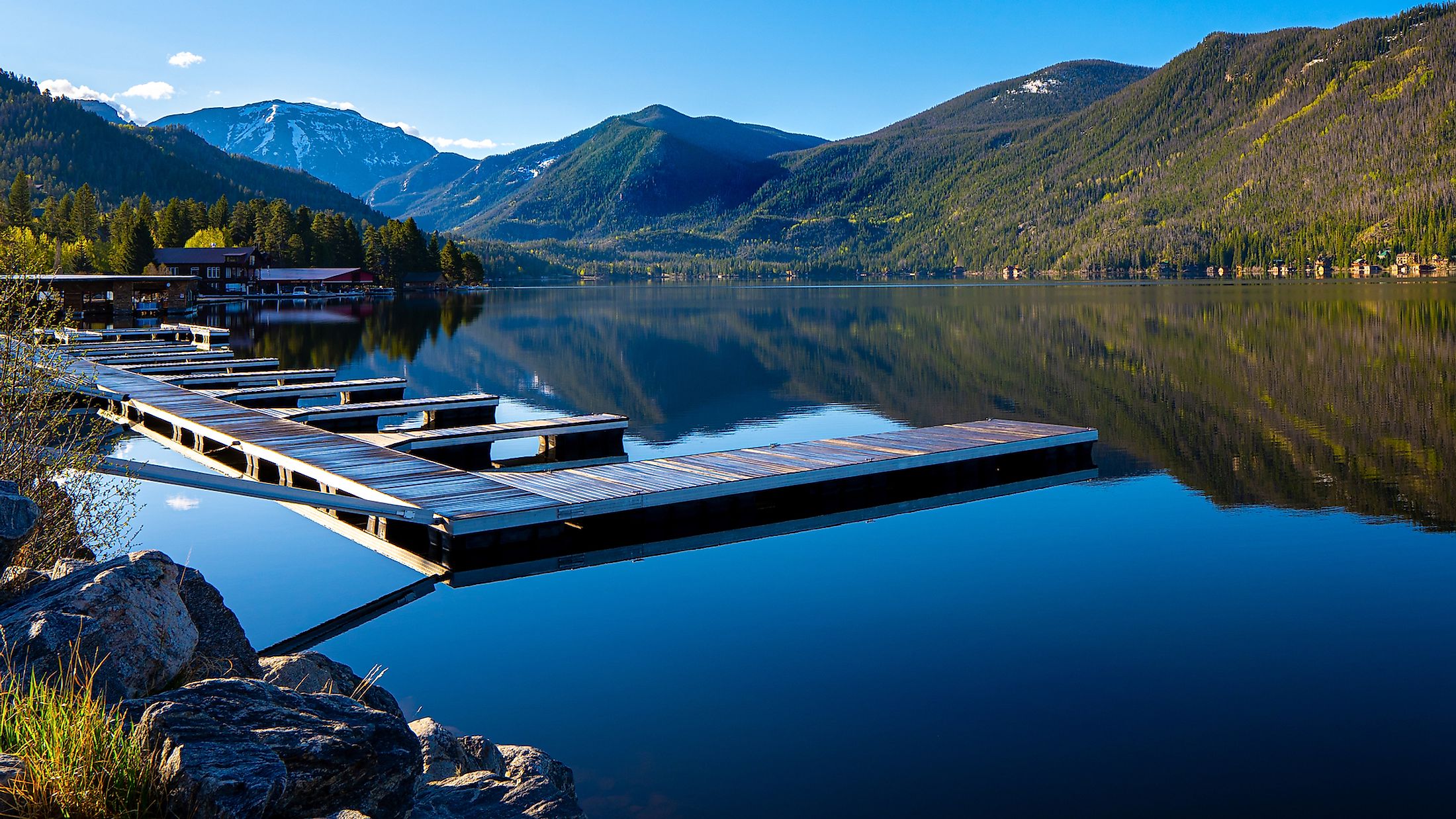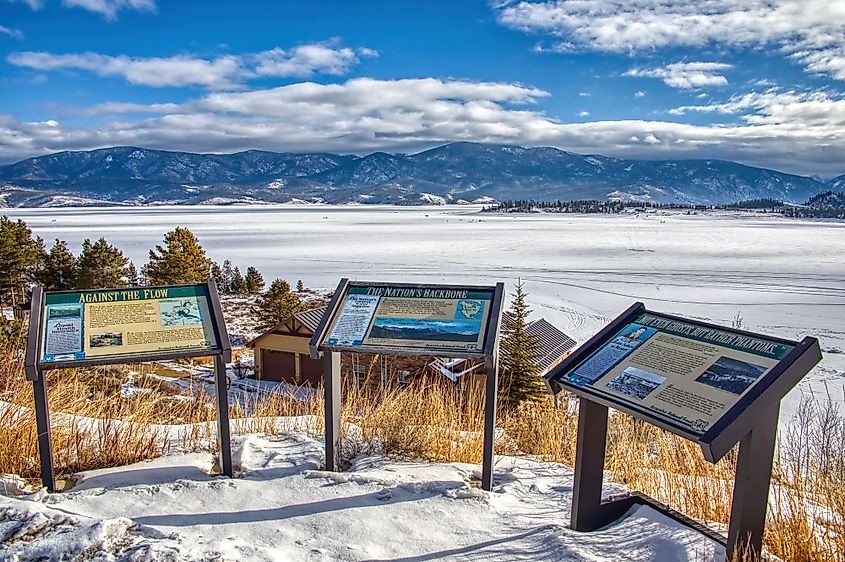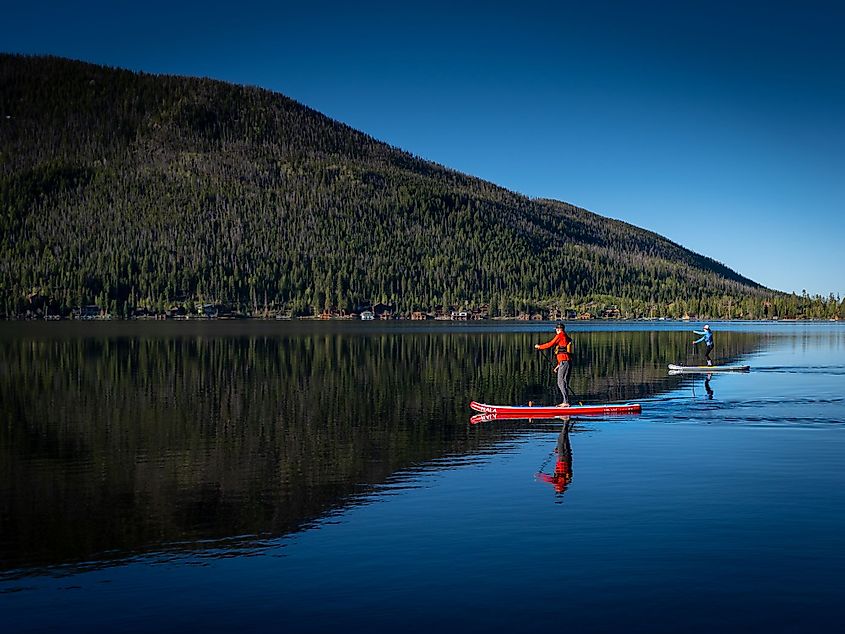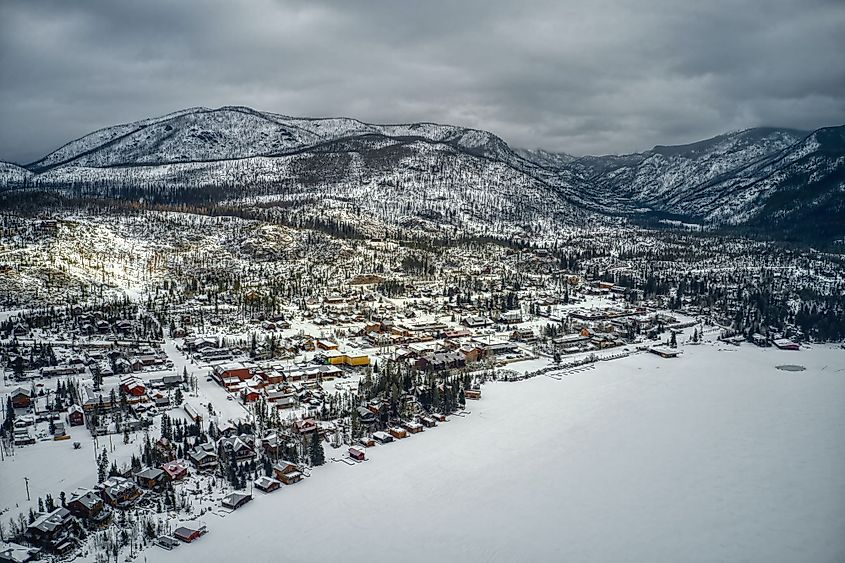
Grand Lake, Colorado
Grand Lake is the biggest and deepest natural water body that is situated in Grand County, in the north-central part of the US State of Colorado. The Grand Lake is located approximately 1.6km from the western entrance of the Rocky Mountain National Park and contains the source of the Colorado River. The Grand Lake was originally named “Spirit Lake” by the indigenous Ute tribes since the members of the tribe believed that the cold waters of the lake served as a dwelling place of all the departed souls.
Geography

Covering an area of 2.05 sq. km, the Grand Lake has a length of 2.4km and a maximum width of 1.6km. Situated at an elevation of 2,550m, this glacial lake reaches a maximum depth of 119m and holds a maximum volume of 84,643,000 cubic meters of water. The Grand Lake is surrounded on three sides by the Rocky Mountain National Park and the lake’s shoreline extends for more than 6.4km. The North and East Inlets that come from the Continental Divide flows into the Grand Lake through the Rocky Mountain National Park. Some of the notable fishes that are found in the Grand Lake include brown trout, brook trout, rainbow trout, kokanee salmon, mackinaw, etc. The statutory town of Grand Lake is situated on the northern shores of the lake.

The Grand Lake forms a part of the Colorado-Big Thompson Project, the main purpose of which is to provide water to the Eastern Front Range and Plains of Colorado by collecting the mountain waters of the Western Slope from the headwaters of the Colorado River. As a part of this water diversion project, the Grand Lake forms a continuous water body with the Shadow Mountain Lake – an artificial reservoir that has been created by the Shadow Mountain Dam. On the western side of the Continental Divide, water is pumped from the Windy Gap and Willow Creek Reservoirs to Lake Granby – the state’s second-largest reservoir. From here, the water is again pumped into the Shadow Mountain Reservoir, which is in turn connected with the Grand Lake. From the Grand Lake, the water flows via the Alva B. Adams Tunnel into the Big Thompson River that is situated on the eastern side of the Rocky Mountains. The waters of the Big Thompson River then drain into the South Platte River which provides water for irrigation, industrial and municipal purposes. Hydroelectric power is also supplied by the project’s diverted water to five power generating stations that are located on the eastern slopes of the Rocky Mountains.

Located close to the Arapaho National Recreation Area, the Grand Lake serves as a major tourist destination and offers many outdoor recreational activities for its visitors. Some of the recreational activities that are offered by the Grand Lake include swimming, boating, fishing, sailing, kayaking, etc. The visitors can rent leisure boats, kayaks, paddleboats, and fishing boats from the Grand Lake Marina located on the lake’s beach. The Grand Lake Yacht Club, which is one of the world’s highest registered yacht anchorages, provides a dock for all the yacht owners. In mid-August, the club also organizes the Annual Regatta Week, which is enjoyed by both the visitors and the local inhabitants. The town of Grand Lake also hosts many events including the display of fireworks every year on the 4th of July as well as for the New Year’s celebration. Many tourists also visit the lake area during the winters to enjoy ice fishing and mountain activities like hiking, mountain biking, and skiing.
Brief History

Geologists believe that the Grand Lake was formed during the Pinedale Glaciation. In the 1800s, the lake was discovered by the Native Americans. Drawn by the lake’s natural beauty and the proximity of game species, several indigenous tribes settled along the banks of the lake. The native Ute tribes who lived in the area named it the “Spirit Lake” as they believed the cold waters of the lake to be a dwelling place of all the departed souls. The discovery of gold from the banks of the river in 1879, brought a stream of miners and prospectors to the area. In due course, the population on the banks of the lake grew and the Town of Grand Lake was established. The future of the Grand Lake became further secured when it became the "Western Gateway" to the Rocky Mountain National Park that was established by US President Woodrow Wilson on January 26, 1915.











